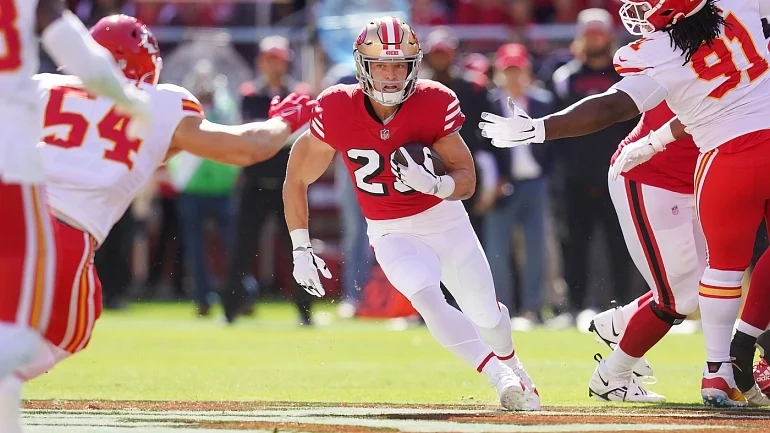Running backs in the National Football League (NFL) are integral to their teams’ offensive strategies, often bearing the brunt of physical play. This position’s high-contact nature makes backs particularly susceptible to injuries, which can significantly impact team performance and player careers. This article delves into the statistical trends and factors influencing injury rates among NFL running backs, utilizing various metrics and data from recent studies.
A Statistical Analysis of Injuries Among NFL Running Backs
Injury Rates and Predictors
General Injury Trends
Running backs are among the most injury-prone positions in the NFL. Data from the past decade reveals that running backs have a higher likelihood of missing games due to injuries compared to other positions. According to an analysis by FantasyPros, the average number of games missed by the top 20 running backs per season is 3.3, with a median of two games missed. In comparison, wide receivers have lower injury rates, with an average of two games missed and a median of one game missed.
Injury Risk Rating and Fragility Rating
Two key metrics used to predict injuries are the Injury Risk Rating and Fragility Rating. The Injury Risk Rating incorporates a player’s projected workload and their Fragility Rating, which is based on their injury history, to estimate the probability of missing two or more games due to a new injury. This rating has been particularly effective in predicting injuries among running backs in the 80-100th percentile range, highlighting players like Rashaad Penny and Elijah Mitchell as high-risk individuals.
Factors Influencing Injury Rates
Body Mass Index (BMI)
BMI, despite being an outdated way of measuring weight and mass, has been identified as a significant predictor of injury risk. Running backs with a BMI below 28 are more likely to miss games due to injuries. This correlation underscores the physical demands placed on backs and the importance of maintaining an optimal body composition to withstand the rigors of the NFL.
Age and Workload
Age is another critical factor in injury rates. Younger running backs (ages 21-24) tend to have higher injury rates compared to their older counterparts (ages 27-28). This trend is likely due to the heavier workloads younger running backs handle as they establish themselves in the league. Conversely, older running backs who remain active tend to have above-average durability, having avoided significant injuries earlier in their careers. This durability allows them to continue performing at a high level despite the physical toll of the position.
Injury Types and Occurrences
Common Injuries
Lower extremity injuries, including knee, ankle, and hamstring injuries, are the most prevalent among NFL players, accounting for a significant portion of time-loss injuries. These injuries are particularly common among running backs due to the frequent and intense physical contact they endure during games.
Impact of Playing Surface and Game Conditions
The type of playing surface can also influence injury rates. Studies have shown that significant ankle sprains and anterior cruciate ligament (ACL) injuries occur more frequently on artificial turf compared to natural grass. Additionally, environmental factors such as temperature have mixed effects on injury rates, with some evidence suggesting that colder temperatures may reduce the risk of concussions.
There’s a study out comparing grass vs turf and it’s fascinating.
Case Studies and Notable Examples
High-Profile Injuries
High-profile running backs like Christian McCaffrey and Saquon Barkley have experienced significant injuries that have impacted their careers and fantasy football value. McCaffrey, for instance, has been identified as a high-risk player with a 63.6% probability of injury in a given season, leading to an average of three games missed per season. Similarly, Barkley has a 57.5% injury probability, reflecting the inherent risks associated with the running back position.
Success Despite Risks
Despite the high injury risks, some running backs have managed to maintain exceptional performance levels. Players like Alvin Kamara, Derrick Henry, and Marshawn Lynch have demonstrated remarkable durability, avoiding career-altering injuries and continuing to produce at a high level into their late 20s. These players exemplify the resilience required to succeed as an NFL running back.
Conclusion
Injuries among NFL running backs are a significant concern, with various factors influencing the likelihood and severity of injuries. Metrics like the Injury Risk Rating and Fragility Rating provide valuable insights into predicting injuries, while factors such as BMI, age, and playing conditions further elucidate the risks faced by running backs. Despite the high injury rates, some running backs have shown exceptional durability, underscoring the importance of resilience and physical conditioning in this demanding position. Understanding these trends and predictors can help teams, players, and fantasy football enthusiasts make informed decisions regarding player health and performance.


